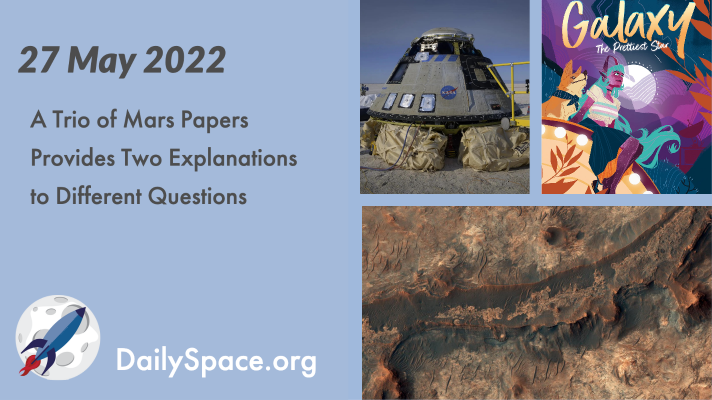
A Trio of Mars Papers Provides Two Explanations to Different Questions
Today, we take a look at three recent papers attempting to explain various phenomena on Mars. One uncovers the cause of discrete aurorae. Another explains the martian haze. And a third actually ends up with more questions than answers. Plus, Boeing’s OFT-2 returns to Earth, ESA’s Solar Orbiter makes its closest approach, and Dr. Pamela reviews the new graphic novel “Galaxy: The Prettiest Star” by Jadzia Axelrod.
Catch us on NowMedia TV
Saturday 11pm Central / midnight Eastern
Sunday 10pm Central / 11pm Eastern
Watch live on these stations: Houston 21.10, Atlanta 22.10
or tune-in on Apple TV, Roku, YouTube Live, or Amazon Prime
Trojan Asteroids: Understanding the Past to Explore the Future
Just how were the Trojan asteroids in orbit with Jupiter discovered? And how were they named? We take a look back at these objects as we get closer to the launch of the Lucy spacecraft. Plus, a cluster of galaxies, a meteoroid explosion at Jupiter, seafloor microbes, wildfires, and an interview with Fraser Cain, publisher of Universe Today and co-host of Astronomy Cast.
Supermassive Black Holes Could Form From Dark Matter
Neutron Star in Supernova 1987A May Have Been Found
Scientists have been looking for the reclusive neutron star expected to be at the center of supernova 1987A for over thirty years, and they may have finally found it in new images from the Chandra and NuSTAR observatories. Plus, a look at conflicting papers on the object that wiped out the dinosaurs, a roundup of news, and this week’s What’s Up.
Rocket Roundup for February 24, 2021
Join us for this week’s Rocket Roundup with host Annie Wilson as we look back at the launches that happened over the last week, including two ISS resupply missions and Yet Another Starlink (with bonus booster landing fail). Plus, we look back at the Friendship 7 mission, which launched back on February 20th, 1962.
NASA’s Perseverance Rover Touches Safely Down on Mars
Hubble Telescope Finds Cluster of Black Holes
While searching for an intermediate-mass black hole, scientists instead found a cluster of smaller black holes in the globular cluster NGC 6397. Plus, supernovae, meteorites, and an interview about mapping water ice on Mars with guests Gareth Morgan and Than Putzig from the Planetary Science Institute.


 We record most shows live, on Twitch. Follow us today to get alerts when we go live.
We record most shows live, on Twitch. Follow us today to get alerts when we go live.






